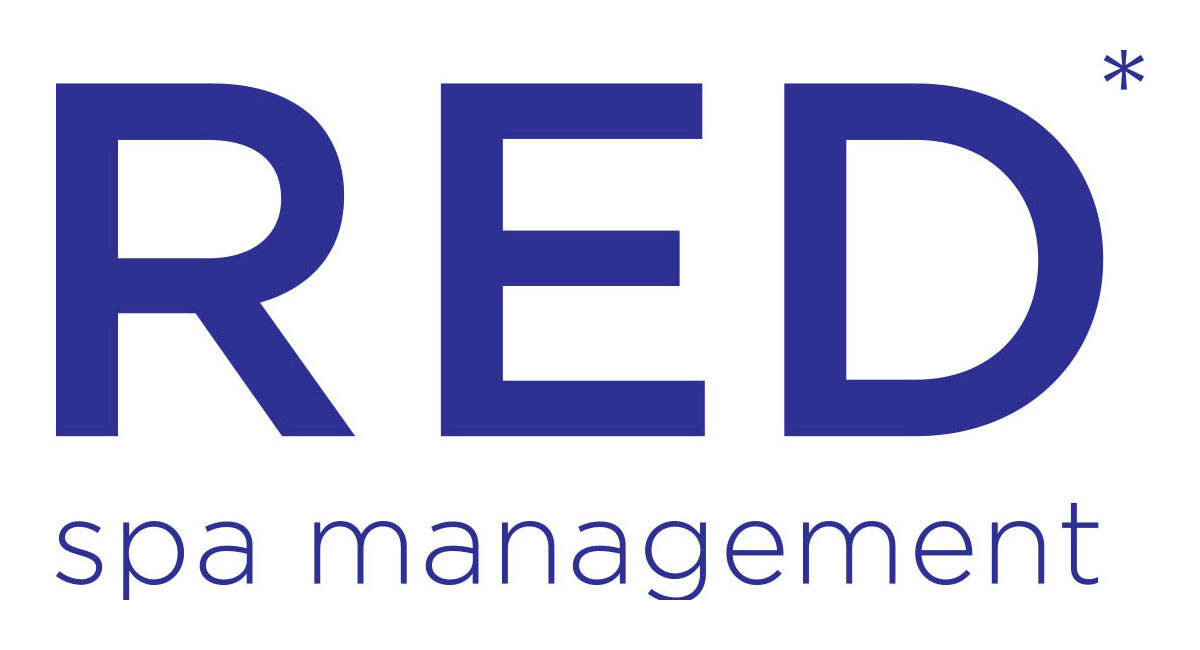
Prefix + Root word + Suffix = Medical Term
PREFIXES
- ab(s) - from
- ad - towards
- an - without
- ambi / amphi - both
- ana - up to, move from
- aniso - unequal
- ante - before, forwards
- anti - against, opposite
- bi - two
- bio - life
- brachy - short
- cata - down
- circum - around
- con - together
- contra - against
- cyte - cell
- de - away from
- di - two
- diplo - double
- dur - hard, firm
- dys - bad, abnormal
- e / ec / ecto /ek - out of
- em / en / endo - in, into
- ent - within
- epi - on
- eso - carry
- eury - broad
- ex / exo - out of
- extra - beyond
- hapto - bind
- hemi - half
- hept - seven
- hetero - different
- homo - same
- hyper - in excess, excessive
- hypo - below, deficient
- im / in - not
- infra - below, underneath
- inter - among, between
- intro - during
- iso - equal
- juxta - adjacent
- macro / magno / mega - large
- medi / meso - middle
- mega / megalo - large
- meta - beyond, between
- micro - small
- neo - new
- non - not
- ob - before
- octa / octo - eight
- pachy - thick
- para - beside
- pent - five
- per - by, through
- peri - around
- pleo - more than normal or usual
- poly - many
- post - behind
- pre - before
- pros / prox - beside
- pseudo - false
- quar - four
- re - back, again
- retro - backwards
- rrhagia / rrhage - bursting
- rrhaphy - stitch, suture
- rrhea - flow, discharge
- rrhexis - rupture
- semi - half
- sex - six
- sept - seven
- sub - under
- super / supra - above, over
- syn / sys - together
- tetra - four
- trans - accross
- uni - one
- ultra - beyond
ROOT
- acanth - spine
- acou - hear
- acro - extremity, sharp
- acu - sharp, abrupt sudden
- adeno - gland
- adipo - fat
- aero - air
- algo - pain
- ambi - both sides
- amnio - bowl
- amph - both sides
- andro - male
- angio - vessel
- ankyl - bent, crooked
- anthro - man, human
- artero - artery (vessel carrying blood away from heart)
- arthro - joint
- artic - little joint
- asthma - sob, short of breath
- atri - entry chamber
- axilla - armpit
- axo - center
- aud / aur / aus - hear
- auto - self
- aux - make grow
- bact - rod
- blast - sprout
- bleph - eyelid
- brachi - arm
- brady - slow
- bronch - related to breathing
- bucc - cheeck
- burs - pocket
- case - deep cut
- calci - limestone
- calco - heel, spur
- calyc - cup
- campy - bend
- carbo - charcoal, carbon
- card(i) - heart
- carpo - wrist
- centesis - puncture
- centr - center
- ceph / cephal - head
- cept - seize
- cereb - brain
- cervic - neck
- chemo - chemistry
- chlor - green
- chol(e) - bile
- chondr - cartilage
- chron - time
- cise - deep cut
- cili - eyelash
- clast - break
- claustr - barrier
- coagul - clot
- cond - hard knob
- cox - hip
- corp - physical body
- crine - secretion
- cutis - skin
- cyan - blue
- cycl - circle
- cysto - urinary, bladder
- cyto - cell
- dacr - tear
- dactyl - fingers, digits
- dens / dent - tooth
- derm - skin
- desis - binding
- dextro - right
- didym - twin
- digit - finger, toes
- dynia - pain
- echin - spiny
- ectasia - dilation
- edem(a) - excess
- enceph - brain
- entero - intestine
- erythro - red
- esthesia - perception
- fer - carrying, bearing
- flect / flex - bend
- fora / foro - make a hole
- fract / frag / fring - break
- gangl - knot
- gastr - stomach
- gen / genesis - origin
- genu - knee
- ger - old
- gest - bring forth
- gleno - shoulder
- glob - sphere
- gloss - tongue
- glute - buttocks
- gynec - female
- hem - blood
- hepat - liver
- hernia - rupture
- hidr - sweat
- histo - tissue
- hydro - water
- hypno - sleep
- hystero - uterus
- iatric - healing
- idio - self
- ject - throw, send
- junc / jug / jux - join together
- lachry - tear
- labio - lip
- lact(o) - milk
- latero - side
- lein - spleen
- levo - left sided
- liga - bind together
- lith - stone
- lumbo - lower back
- lysis - breaking down
- mal(i) - bad
- medulla - soft inner part
- mere - part
- manu - hand
- mast - breast
- melia - limb
- mnem / mnes - memory
- morb - sick
- morph - shape
- myo - muscle
- narco - sleep
- naso - sleep
- necro - dead, decay
- nephr - kidney
- neuro - nerve
- olfact - smell
- oma / onco - tumor, lump, mass
- op / opth - eye
- oro - mouth
- ortho - straight
- ost - bone
- partum - birth
- patho - disease
- pect - chest
- pes / ped - foot
- phage - eat
- phlebo - vein
- plantar - sole of foot
- pod - foot
- pre / pro - before
- procto - rectum
- pron - face down
- psyche - spirit, mind
- pulmo - lung
- punct - prick, puncture
- rhino - nose
- sang - blood
- sclero - hard
- sthen - strength
- stom - mouth
- tricho - hair
- trophy - grow
- vaso - blood vessel
- veno - vein
- vert - turn
- viscero - innards
SUFFIXES
- ase - fermenter
- cide - killer
- ectomy - cut out
- form - shaped
- iasis - full of
- ism - theory of
- itis - inflammation
- ize - do
- logy - study of
- megaly - large
- oma - tumor
- osis - full of
- pathy - disease of
- penia - lack of
- plexi - fix
- rhea - discharge
- tomy - cut
THE LAYMAN'S GLOSSARY OF MEDICAL TERMS
Benign-What you be after you be eight
Artery-The study of paintings
Bacteria-Back door to cafeteria
Barium-What doctors do when patients die
Cesarean Section-A neighborhood in Rome
Catscan-Searching for kitty
Cauterize-Made eye contact with her
Colic-A sheep dog
Coma-A punctuation mark
Congenital-Friendly
D & C-Where Washington is
Dilate-To live long
Enema-Not a friend
Fester-Quicker than someone else
Fibula-A small lie
Genital-Non-Jewish person
G.I. Series-World Series of military baseball
Hangnail-What you hang your coat on.
High Colonic-Jewish religious holiday
Impotent-Distinguished, well known
Labor Pain-Getting hurt at work
Medical Staff-A Doctor's cane
Morbid-A higher offer than I bid
Nitrates-Cheaper than day rates
Node-Was aware of
Outpatient-A person who has fainted
Pap Smear-A fatherhood test
Post Operative-A letter carrier
Pelvis-A second cousin to Elvis
Prostate-Flat on your back
Recovery Room-Place to do upholstery
Rectum-Pert near killed him
Rheumatic-Amorous
Secretion-Hiding something
Seizure-Roman emperor
Tablet-A small table
Terminal Illness-Getting sick at the airport
Tumor-More than one
Urine-Opposite of you're out
Varicose-Near by/close by
Vein-Conceited
Real Medical Terms
Abduction- motion away from median.
Acromion- terminal ramus of the scapular spine, angles ventrally at approximately 90 degrees to spine
Adduction- motion toward median.
Agonist- the prime mover, contracting muscle which in initiates movement from a neutral or resting state
Ala- wing
Analogy- comparative anatomical reference to similar functional application from variously derived structures in evolution; e.g. bird-wing and insect-wing are analogous
Anatomical Position- position which acts as index for all anatomical reference in orientation, plane and organization; standing erect with hands to side and palms facing forward.
Anguli- corner of mouth
Antagonist- in conflict with an agonist, can counteract motion reciprocally, modifying motion in power, speed. Used together in balance to "freeze" motion at a joint.
Anterior- before animal; in front of potential forward movement.
Aponeuosis- sheet of tendonous fascia; may be composed of several layers contributed by multiple muscles, and from which those muscles may be considered to arise as from skeleton
Appendicular- relating to all the parts of an appendage which attach to the axial skeleton.
Articulation- divide into parts-moveable joint or a juncture between bones
Attachments- areas in which fascia of muscles blend with periosteum, fixing muscles to casings of skeletal elements. Tendonous attachments are relatively small and focused. Fleshy attachments are broad, dispersing muscle fibers across relatively large zone of surface of periosteum
Axial- linear organization of segments along axis of spinal cord; metameric core animal composed of neural pattern, heart/lung and gut; basic fish-pattern, primitive agnathan design.
Axis- anatomical, rather than geometric, in coronal plane; it follows the curvatures of vertebral column described by tracing line of transverse processes of neural arch.
Belly- fleshy part of muscle, mass of contractile tissue
Bilateralism- all structures lateral to median are developed in mirror-image across median plane.
Bursa- pad, capsule filled with synovial fluid
Calcaneus- heel
Carpus, Carpal- wrist
Cartilage- non-osseous skeletal material composed of often elasticized collagen in various compositions performing several functions in the body: replacement pattern for bone, articular surfaces in joints, fibrocartilage connections, flexible skeletal elements
Caudal- tail-end of animal.
Ceps- head(s) of muscle, meaning separate main attachments
Chordate- dorsal axial nerve cord with bilaterally symmetrical and metameric nerves; ventral supporting rod of notochord; presence of gill-arches
Collagen- universal structural matrix protein material
Compression- forces which act to compact matter, producing crushing or bending
Concha-shell shaped
Condyle- knuckle-gliding rotatory articular surface
Contraction- electro-chemical action within muscle fiber causing banded zones on the fiber to move past each other; contraction occurs at bands along axis of fiber, = 1/3 to ½ length of fiber. Shorten in length.
Cornu- horn
Coronal or Frontal Plane- L: crown: 90 degrees to sagittal plane; named for frontal parietal suture; latero-medio-lateral plane; crosssection as if to slice from top to bottom, from ear to ear.
Costal- reference to ribs
Cranial- head-end of animal.
Crest-OE to shake- a marked ridge
Crus-leg; crura
Depressor- lowers
Diaphysis- shaft of long bone, a center of ossification, often built around hollow, medullary cavity full of yellow fat marrow
Digastric- 2-bellied
Digitation- muscle dividing into "fingers" of muscle or tendon
Distal- farther from root of appendage.
Dorsal- epi-axial division of animal.
Eminence- elevation or projection on bone
Epi-axial- anatomical division of vertebrate from transverse vertebral process through spinous process; dorsal portion, called above (epi) the vertebral column in the fish.
Epicondyle- elevation near and associated with condyle
Epiphysis- ends of bone with separate growth centers joining diaphysis at epiphyseal cartilaginous junctions
Erector-brings upright, or straightens
Eukaryotic- cells comprised of host, mononucleate cell and symbiotic internal organelles
Ex te- exit from sheath or from providing sheathing
Extensor- any muscle in which contraction takes ventral surfaces apart, dorsal into apposition; can be ambiguous in human anatomical position
Extrinsic- opposite of intrinsic, dependent on something outside itself. Several attachments of the muscle, latissimus dorsi, are made to different skeletal subsystems; Axial (ribs, supraspinous ligament); pelvic (iliac crest); pectoral (humerus); and to the lumbodorsal fascia.
Facet- small face- small articular surface
Fascia- fasces- variably dense and variably elastic fibrous collagen casings of muscle. "Fibrous envelopment of muscular structures"
Fenestration- "window" in structure
Fiber- contractile organ
Flexor- any muscle in which contraction brings ventral surfaces together; can be ambiguous in human anatomical position
Foramen- perforation in bone
Fossa- L. Cavity; depression
Glenoid fossa- "glen" shallow fossa
Head-separate attachment
Hiatus- "yawn" - opening in soft tissue
Homology- comparative anatomical reference to variant functional application of same structure in evolution; e.g. pectoral fin=arm=wing: all are homologous
Hypo-axial- anatomical division of vertebrate from transverse vertebral process toward vertebral body; ventral portion called below (hypo) the vertebral column in the fish.
Ilium- wall-expansive, blade-like element of pelvic girdle which attaches legs to sacrum, cranial to acetabulum;iliac crest comprises "false" pelvis
Inferior- down-most, below animal.
Infra- caudal-to; eg infraspinous.
Inguinal- referring to groin; inguinal ligament
Insertion- muscle attachment at relatively mobile end
Inter- between.
Intrinsic- wholly contained within itself. All the attachments of the muscle, biceps brachi, are made to components of the pectoral appendicular skeletal subsystems. They connect the scapula th the radius and to the fascia of the forearm. All are intrinsic to the pectoral appendage.
Ischium- Gk: hip joint (isk-i-um) - one of three pelvic bones, caudal and dorsal to acetabulum. Ischial tuberosities are the "sitters"
Joint- articulation between bones behaving as fulcrum in leverage
Joint Capsule- ligaments at joint contributing to enclosed capsule holding articular surfaces in bath of hydraulic "synovial" fluid
Joint or Biarticular Muscle- a muscle which crosses two or more moveable joints. Its contraction can therefore effect the position of at least three bones and must be assisted by synergist muscles to produce predictable motion.
Labia- lips
Labrum- lip, rim of cartilage which expands articular capsule in some skeletal joints
Lamina- L: "layer" - wall of neural arch between transverse process and spine
Lateral- relatively far from median.
Levator- raises
Leverage- effect producing mechanical advantage, an increase in work through use of levers (bones) against fulcra (joints); mechanical principles of ratio of length of force arm to work arm, direction of forces and amount of force utilized govern advantage or disadvantage obtained
Ligament- strongly fibrous non-elastic connective membrane joining skeletal parts at joints
Line- linear elevation in skeletal scarring by fascial attachment of muscle or bone
Longitudinal Axis- along the long axis
Lunar- moon-shaped; semi-lunar: crescent
Magnus- great, large
Main Ray- primary structural radiant in appendicular skeleton; main bones in series from tip to tip
Major- of 2 or more; greater
Malleolus- L. little hammer-distal ends of fibula and tibia
Mandible- lower jaw
Manubrium- L: sword-handle-cranial element of sternum
Maxilla- upper jaw
Medial- relatively close to median.
Median Plane- L: middle- the center sagittal plane dividing body into two equal halves; cross-section as if to slice between eyes.
Meniscus- L: little moons - cups of cartilage which provide female bearing surfaces to femoral condyles
Metamerism- Gk part; after or between. Serial repetitive segmentation; morphologic pattern repeated in each segment; heterochrony (variation through developmental timing) produces different animals which share ideas of constant cranial, cervical, thoracic, caudal pattern; genetically economical provides a workable pattern upon which to build coherent neurological and functional segmentation
Metazoan- multicellular animals
Minor- of 2 or more, lesser in size and /or function
Myo- referring to muscle
Neoteny- retention of juvenile form; the use of a juvenile form to create a new animal; a simplified version of heterochrony, or differently timed development of the common genetic package, is probably the major mechanism of evolution. A simple way to vary the animal is to vary growth rates by manipulating their onset, duration and offset. Some scientists believe humans are neotenous gorillas.
Neural- Gk: Nerve or sinew- reference to nerve tissue and patterned system
Notochord- Gk: noto=back - Webster's 3rd:…" a longitudinal flexible rod of cells that acts as a specific inductor of neural plate formation,
Oblique- angular
Occipital- base of cranium
Odontoid process- "tooth" or dens of C2; misplaced body of C1
Olecranon- elbow
Orbicular- round
Origin- muscle attachment at relatively fixed end
Oris- mouth; (orbicularis oris)
Os- bone
Pedicle- "foot" of neural arch between body and transverse process
Pennaform- L: feather-formed - composed of "quill" of tendon, "vanes" of oblique muscle fibers
Perineum- Gk: to empty out - space between genitals and ; pelvic "floor"
Periosteum- elastic fascia casing of bone
Phalanx- Gk: formation of spearmen - finger bone; digit; Pl: phalanges
Pharynx- Gk=Throat, Comp to Pharanx: gully, chasm. From lips to cricoid cartilage joining thyroid cartilage to trachea
plate of the mesoderm splits in embryo of a craniate vertebrate together with the endoderm internal to it and forming most of the walls and substance of the visceral organs." Contrast with somatopleure, the layer that becomes the body wall (splank)
Posterior- behind animal; following potential forward movement.
Process- Latin: Proceed - a projection of bone
Profound- deep structure; e.g. flexor digitorum profundus
Prokaryotic- single-animal cells
Prone- dorsal surface "up"
Proprioception- Proprio: Own; reception. Reception of stimuli generated within the body
Protozoan- single cell animals
Protuberance- Latin: Bulge
Proximal- closer to root of appendage
Pterygoid- Gk: wing - wing-like
Quadratus- 4-sided
Ramus- branch of bone
Rectus- straightener , erector
Retinaculum- retaining band of fascia
Ridge- a raised line
Rostral- L:ship's prow - ventral-most tip of head: toward tip of nose
Rotation- joint articulation between bones designed so that compressive forces translate into rotatory utilization of bending forces
Rotator- rotates
Ruggosity- robustness in skeleton
Sagittal Plane-L. arrow (fontanelle resembles arrow-head in shaft of suture) - median suture of cranium; any dorso-ventral plane through body parallel to median.
Sciatic- ref. To leg: isch-iatic (Sy-at-ic)
Septum- divider which both separates forms (and function) and can provide additional skeletal attachment
Serratus- saw-toothed
Sesmoid- sesame-seed-shaped
Shaft- long
Skeleton- the boney structures of the body.
Slip- auxiliary muscle attachment
Sphenoid- wedged
Spine- sharp eminence or ridge
Splanch- Gk: entrail, comp Gk spleen: splanchnopleure "a layer of tissue consisting of the inner of the two layers into which the lateral
Splenius- bandage
Squama- squamous; fish-scale-shaped
Stylo- attached to styloid process of the temporal bone
Sub- below-e.g. subclavius
Subcutaneous- Below the surface of the skin; in anatomical nomenclature, it means immediately beneath the skin's surface rather than deep.
Sublime- superficial
Sulcus- Gk: furrow; OE: plow; ME dig, cane -groove-
Superior- up-most, above animal.
Supine- ventral surface "up"
Supra- cranial-to-e.g. supraspinous
Supra, Super- above, on top of
Sura- "triceps sura(e)" - calf of leg
Sustenaculum- L: sustento: hold - Process of calcaneus that supports talus of ankle system
Suture- stitch - joints of the dermal bones of the cranium
Symphysis- joint made through fibrocartilage union
Synergist- actor involved in neither direct agonism/antagonism which qualifies motion of active actors
Synovial Fluid- lubricating, hydraulic fluid secreted by articulations, bursae, tendon sheaths
Tarsus, Tarsal- ankle
te- enter or provide sheath
Tendon- elastic fascia arising from periosteum blending with fascia covering muscle
Tendon Sheath- padded tube filled with synovial fluid. Loose fascia casing of tendon, protective of tendon and surrounding tissue
Tensile- forces which act to separate matter
Tensor- muscle which tenses other structures
Tetrapod- vertebrate having arms and legs or homologue; usually refers to terrestrial animals
that in the lowest chordates…and in the embryos of the higher vertebrates forms the supporting axis of vertebrates as the bodies of the vertebrae develop, and that arises as an outgrowth from dorsal lip of the blastopore extending forward between epiblast and hypoblast in the middorsal line." Blast refers to "builder" -tissue
The muscle links together the subsystems.
Thorax- Gk: curiass or breast-plate - rib cage
Torque- twisting forces
Translation- modulation of one type of motion into another
Transverse or Horizontal Plane- 90 degrees both to sagittal and coronal planes, parallel to ground in anatomical position; cross-section as if to slice a loaf of bread standing on its heel.
Trochanter- Gk: runner - Runner's muscle-attachment
Trochlea- Gk: spool - "keyed" tubular articular design
Tubercle-L: knob - small rough prominence
Tuberosity- large prominence
Veli Palatini- soft palate; a continuation of the hard palate
Ventral- hypo-axial division of animal, including palmar and plantar Joint, or Monarticular Muscle- a muscle which crosses only one moveable joint. Its contraction produces relatively predictable motion.
Vertebra- joint, turn- Centrum ossified from segment of notochord. The envelope of the spinal cord probably leads the growth of walls of bone in an arch, dorsally, to meet on the median at the spine
Vertebrate- chordate in which notochord is serially modified into vertebral bodies, upon which neural arches enclose spinal cord
Visceral- Lat: intestine- ref. To internal organs; also ref. To mouth- and throat-parts of vertebrates derived from pharyngeal (see pharynx) structures. e.g. mandible, hyoid bone, thyroid cartilage, trachea
Zahourek's Corollary- at every joint there are both a 1 joint muscle and a 2 joint muscle which can act in each cardinal axis of motion
Zygoma- yoke









